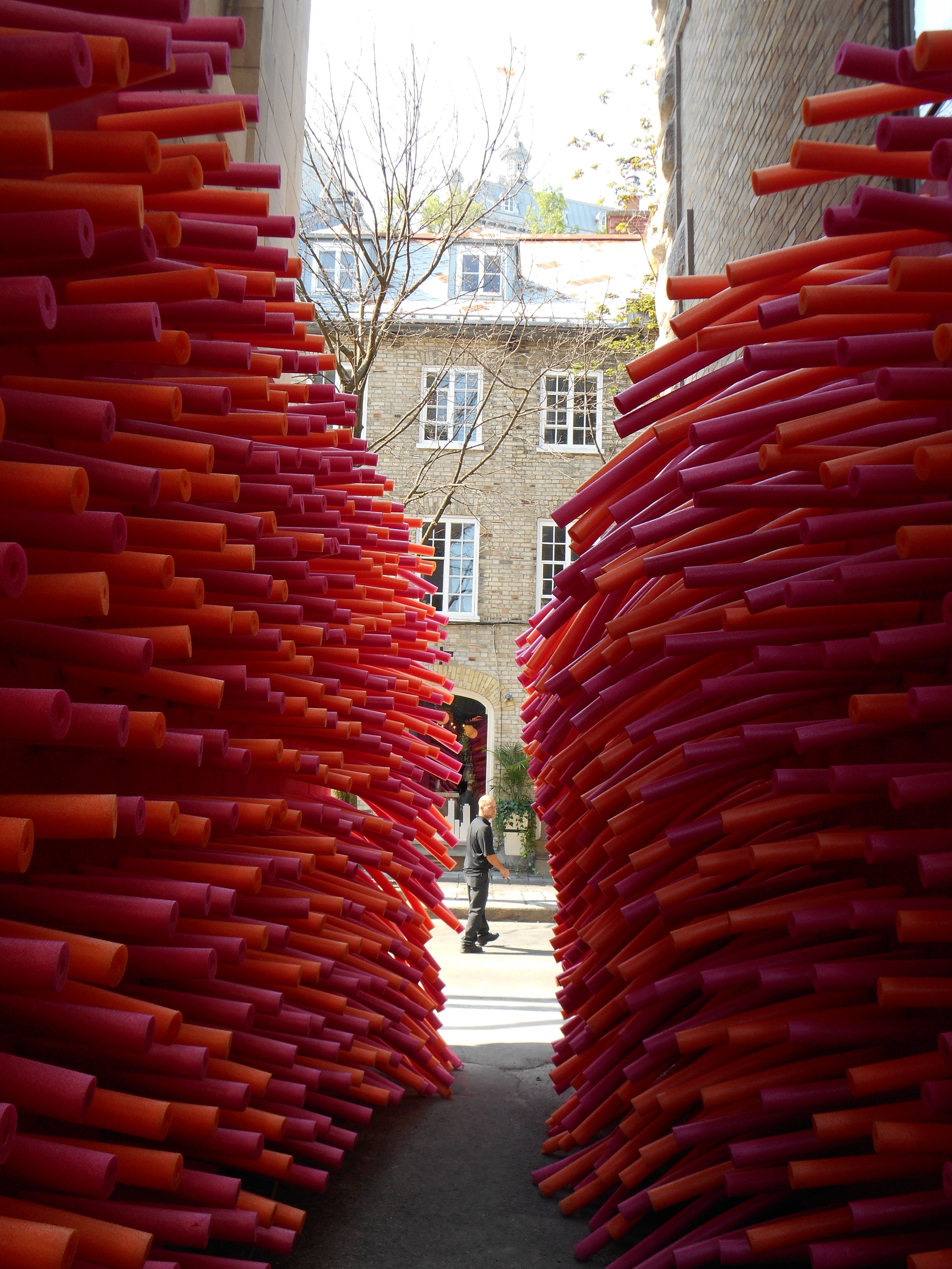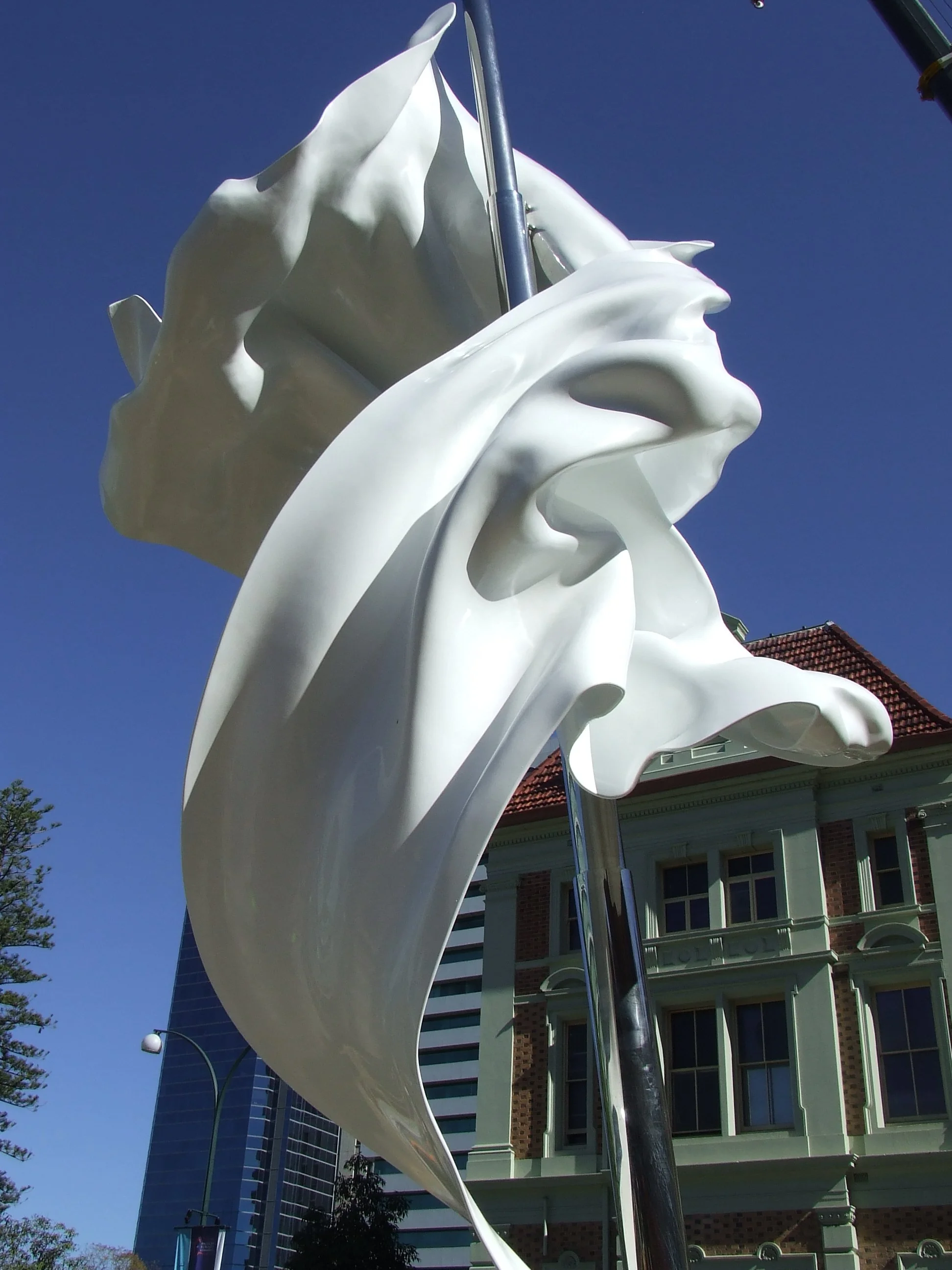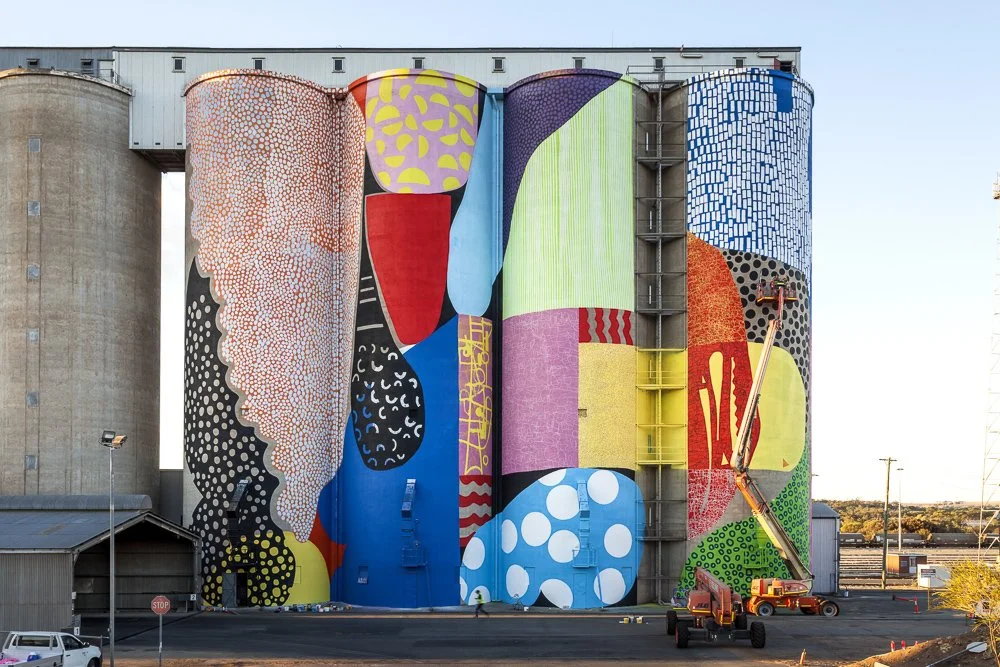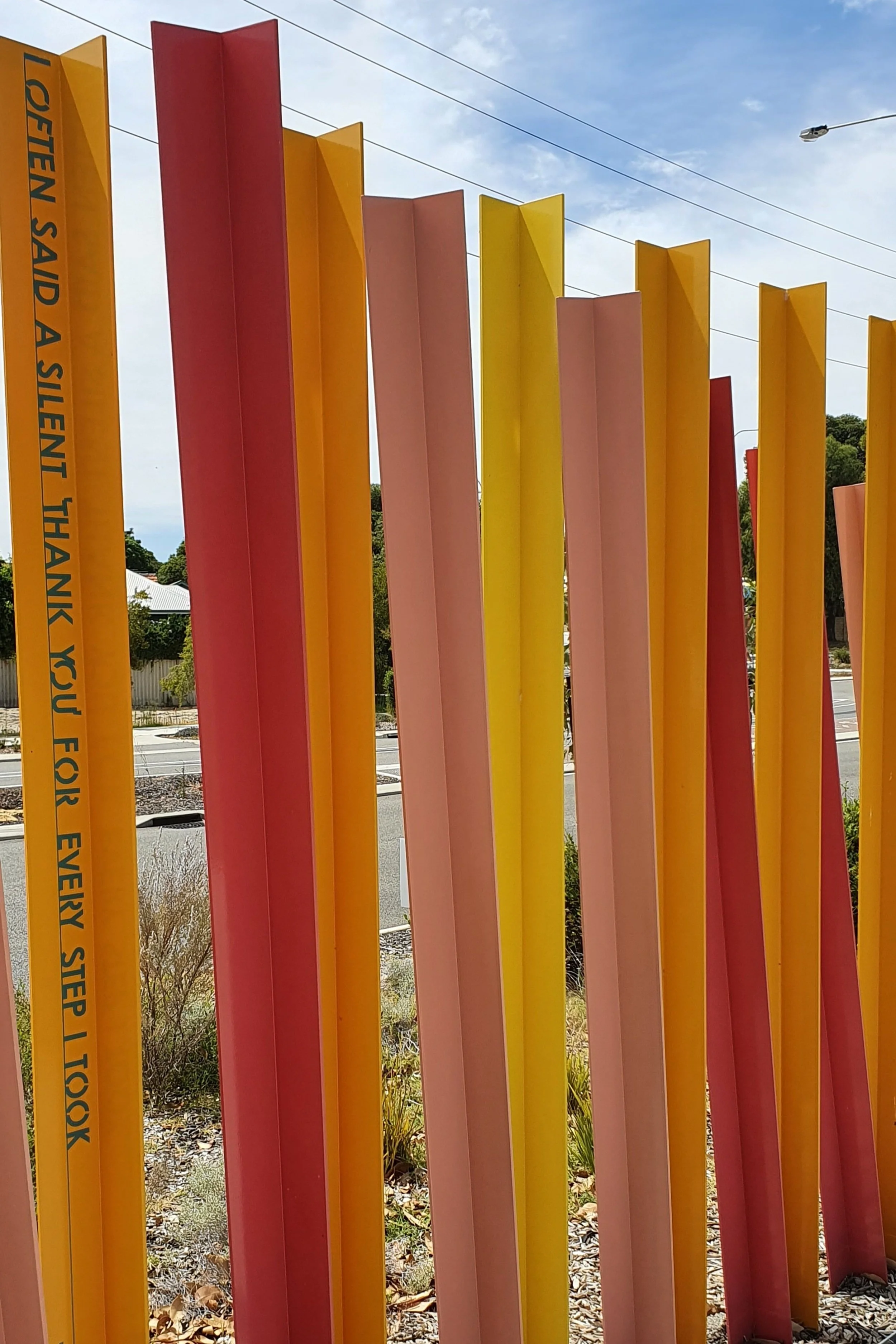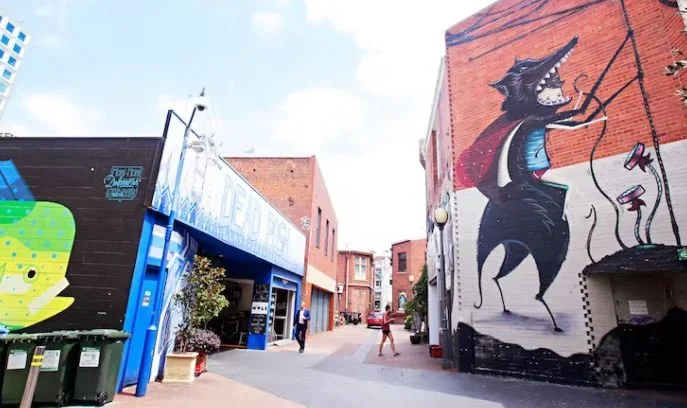The value and impact of public art
Public art has many faces. It spans in size from colossal building-scale sculptures to the small and subtle; sometimes almost hidden within the built environment. It can be permanent ephemeral, or participatory. The scope of public engagement and the level of value it returns to the community varies and is often hotly debated.
Why is public art valuable? How does public art bring value to the community? Is there any benefit of public art to people beyond just ‘art lovers’?
Here, I share the top ten reasons why public art is good for the built environment and its community of regular (and occasional) visitors. There are also positive impacts of public art on the construction industry, and the broader economy. Here are some local examples from Perth, Western Australia, and overseas.
Public art makes art
accessible.
Why is much of our visual arts today confined to private or exclusive spaces? Visual art has been around for millennia, often being highly accessible. The oldest known art in Australia is Aboriginal rock paintings in Western Australia’s very own Kimberley region [dated at an estimated 17,500 years]. So art in public spaces is nothing new. Art continued to be incorporated into the exterior of buildings and the built environment for millennia, in the form of friezes, columns, and the like, but then fell out of favour, particularly in the twentieth century. Public art schemes by local councils and government make visual arts accessible again as part of everyone’s every day.
Public art should consider cultural and age differences. Public art isn’t for art aficionados only, it is for a range of people with a range of visual language understandings. Although not every work needs to speak to every person, a variety of works within the built environment create an opportunity for people to find works that speak to them.
To keep our art accessible to everyone means artists and commissioning bodies should consider people with disabilities. A variety of artwork types provides a range of opportunities for engagement. Soundscapes, audio, tactile, or other sensory works for the blind, and artworks in
wheelchair-accessible locations. Maximising accessibility to the arts is what public art does best - it could be beneath your feet, something to walk around, interact with, or look up to. Public Art in the built environment can span a range of sizes, materials, locations, and most importantly, messages, to makes art both physically and mentally accessible.
Delirious Frites by Les Astronautes, sited in a disused alley in Quebec, 2014. Creative Commons.
Public art expresses our values.
Public art expresses our values in society. It may honour the singular hero or leader, or celebrate everyday people and express our community values. Public art may remind us of significant history, make all people feel welcome and included, or can celebrate our environment.
As Marco Cianfanelli describes his sculpture of Nelson Mandela: “The front of the sculpture is a portrait of Mandela, it has vertical bars which represent his imprisonment…When you walk through the structure it radiates like a burst of light, which symbolises the political uprising of many people and solidarity.” Located at the site where he was captured, it is a powerful reminder of this inspiring individual and a people’s struggle. It evokes a range of emotions, while also serving as a learning opportunity. Wow!
Artists often redress, question, or challenge ideas around inequity. Their works reflect beliefs, ideals and challenge norms as cultural attitudes shift. By creating works that express values, artists can reflect or shift thinking and make people feel understood, challenged or mindful of important events.
Photo by Will Green. Creative Commons. Sculpture of Nelson Mandela at his capture site near Howick in Kwazulu Natal, South Africa by artist Marco Cianfanelli
Public art unites communities.
This brings me to the next point; it brings people together by encouraging people to sit and watch, discuss, wonder, and at times physically engage with the artwork. Given the social distancing and the divisiveness in politics and the media in recent years, people are becoming increasingly physically separated and alienated from each other.
Public art has the capacity to achieve one of our most fundamental needs as humans; to have a positive connection with others, including strangers. Special events like stadium sports, festivals, and community events do this, but public art can do this every day, multiple times a day, over many years. Shared stories, discussions, and experiences build a sense of community and foster social cohesion.
The bronze sculpture Eliza by Tony Jones and Ben Jones on Perth’s Swan River in Crawley is frequently being dressed up or decorated in the political or cultural statements of the day. The fact that she is only accessible by swimming out to her, or on a boat, make everyone wonders- who did this? When? Is it one person or group? Encouraging even more discussion.
It brings people together through observation and I think everyone in Perth has had at least one conversation about Eliza. With her own Facebook page, she has a further digital life that again brings people together through the social media platform. Impressive.
Image of a post on ‘Eliza the Swan River Statue’ from 2020, showing Eliza dressed as a nurse reminding viewers to stay 1.5m apart to save lives from Covid-19.
Public art is capacity building.
Artists are often experimental with materials and the scale of public art often relies on working with manufacturing professionals. With every artwork being new, there are new skills, techniques, and approaches being developed. This builds capacity in both our manufacturing industries and the artists themselves. A symbiotic relationship of shared learning can emerge.
Kaleidoscopic Wave, a series of laser-cut, folded, and assembled 0.9mm thick, high polished stainless steel sheets, to form a technically complex sculptural soffit for Fremantle College, was one such example. The fabricator required the development of new knowledge in order to execute the final work. Each 30-metre long ‘wave’ of approximately 400 panels required absolute accuracy. As a result, each wave was within 10mm of the overall required length, well within required tolerance levels. The combination of refined 3D modeling skills, across 2 CAD modeling programs and accurate hand skills in assembly, resulted in a precise work that generated new knowledge, experience and skills.
Images of process drawings to produce Kaleidoscopic Wave by Forlano Design and Composite Components.
Public art strengthens local business.
Just as experimental public art builds capacity, it often keeps work local, as the artist needs to work closely with the manufacturer.
Keeping our local people employed strengthens various industries; from the creatives to engineering, fabrication, and construction and even local history researchers. Investment dollars from public art go back into the local community. Of course, increased visitation and dwell time in public spaces that come from well-loved and popular art, also bring in more income to the nearby businesses.
The Ascalon sculpture in the forecourt of St Georges Cathedral, shown adjacent, is in the centre of Perth. It is an excellent example of keeping manufacturing local despite its complexity. Designed by artists Christian de Vietri and Marcus Canning, the 12m high sculpture was technically difficult and required a high level of craftsmanship and experience in pattern-making, advanced composites and 3D modelling.
With the decision to manufacture the work in composites, local businesses in Perth collaborated to create the work. Composite Components had the specialist knowledge to develop a methodology for manufacturing such a large work with significant complexity. Composite Components then advised Swarbricks as to the process of manufacturing to suit their facilities, the timeframe and budget. Local engineers, crane operators, and the like collaborated together to create this world-class sculpture to the exacting vision of the artists.
We’ll have none of that “let’s buy an off-the-shelf sculpture from an offshore maker”, thank you.
Ascalon sculpture. Photo by G. Oldfield
Public art can bring joy.
The discovery of public art and taking the time to understand it can bring a sense of connection to a place and enhance wellbeing. The unexpectedness can delight. The opportunities to talk with a stranger can bring about a pleasant interaction, that would otherwise not happen. Public art may be entertaining or gives sheer visual delight.
Public art can be fun, and oftentimes, brings excitement to what may have otherwise been an uneventful, dull space.
Photo by Alex Brewer. Creative Commons. Northam Silo mural by Hense and part of the Silo Trail by FORM.
Public art can raise awareness.
Public art often tells stories, sometimes previously hidden away in the archives or forgotten memories. Public art can make these stories alive again. Some recall inspiring events or people. Memorials can be solemn but necessary reminders. Others may educate or reflect on the natural world that has been lost and encourage environmental stewardship. Public art can also raise awareness about possible futures, imagined futures, or inspire action.
Pre-pandemic, Forlano Design was commissioned to create a sculptural artwork (detail shown) that would also serve as a safety barrier and iconic marker to a busy street. The location, at the former Shenton Park Rehabilitation Hospital, was steeped in history, which was largely a distant memory for many Perth residents. It was an important opportunity to create a work that acknowledged the trials and successes of the rehabilitation hospital, most notably during the Poliomyelitis (Polio) epidemic. A disease that at first, was mysterious with tragic consequences.
Although the team knew the stories of resilience and triumph over tragedy were timeless, little did we know that barely a year after completion, we would encounter the Covid-19 pandemic. These stories can remind us of the past challenges of others and how they relate to our current lives.
Public art that raises awareness can remind us we are not alone, show us the resilience and ingenuity of humans, and give us an opportunity to learn from the past.
Photo by Author. Detail of Mutualities at Montario Quarter, Shenton Park, Western Australia by Forlano Design.
Public art brings in tourist dollars.
From temporary events or arts festivals to permanent public art - quality well-curated art in the public domain brings in local, national and international tourism. It enlivens places such as Bondi with an extra 500,000 visitors during the two-week period of Sculpture by the Sea. It brings tourism dollars to rural locations in Western Australia such as the silo trail (see above), or makes a city more desirable for tourists to visit.
A comprehensive public art collection in a variety of locations and with a variety of approaches makes places more appealing for visitation.
In 2015 in the Perth CBD, there was the unforgettable performance of ‘The Giants’ where the ‘Little Girl’ (pictured) walked with other giant puppets through the city streets. Traffic stopped. Tourists had poured in. This Perth performance was the only opportunity to see it in Australia and is believed to have contributed $10M to the economy from tourist dollars according to Australian Hotels Association chief executive Bradley Woods. (2015, news.com.au). Not bad at all.
Visitation was in the “hundreds of thousands” according to the then Premier, Colin Barnett. The financial benefits spread across the hospitality and transport sectors and beyond.
Photo: ‘The Giants’ by Royal de Luxe. Creative commons.
Public art generates stewardship.
Spaces providing artwork with humanity shows investment in the community. As a result, people give back in ways not immediately obvious, through a sense of community ownership and pride in the public space, increased use, and building community gathering opportunities.
CIVIL STEWARDSHIP
When public art has endeared itself to the community, the community will act when it is damaged or lost. We saw this on the occasion of the disappearance of the CY O'Connor statue by Tony Jones at North Coogee beach. When locals reported the sculpture was missing to the authorities, it was located on the ocean floor and reinstated. (2018, WA Today, ‘Repaired C.Y O’Connor statue returns home to Fremantle’)
SAFETY
When public art increases dwell time, particularly to underutilised spaces it encourages greater passive surveillance. Disused laneways that have been cleaned up and enlivened with murals now attract people rather than repelling them. A place that once looked risky, is now occupied with more people and is safer. A wonderful example of this is Wolf Lane in urban Perth, which has also drawn boutique businesses to operate there, further growing the sense of community, safety and value for all users.
Photo of Wolf Lane, courtesy of The Urban List. Creative Commons.
Public art inspires and educates young minds.
Curious young minds are open to seeing the world from a new perspective and what better way than through the everyday experience of coming across art.
Art helps us see new possibilities, inspire us, or see a new way forward. Art can encapsulate a mood or a message in a strong visual that resonates and is easy to remember and inspire young minds.
Every year hundreds of Year 6, West Australian students tour the public spaces of the Parliament of Western Australia building. The artwork tells the stories of place, women’s rights, and Parliamentary history. This work aims, amongst other things, at reminding all that a women’s place is in the decision-making centre of Parliament. It looks forward and hopes to inspire young women into positions of power.
Photo by Douglas Mark Black of Shield of Voices by Penelope Forlano.

